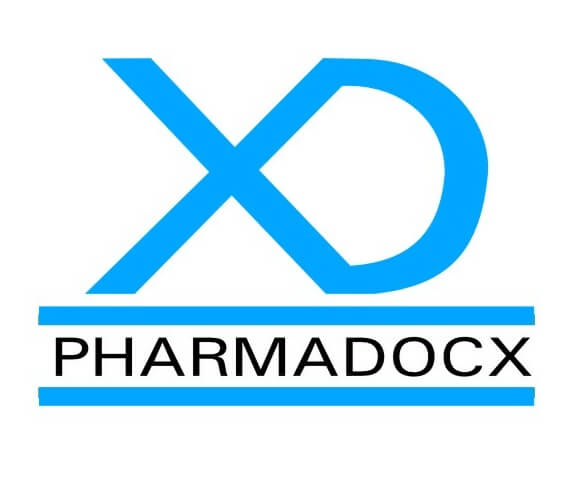What is a pharmaceutical plant layout?
A pharmaceutical plant layout refers to the strategic floor plan of a pharmaceutical manufacturing facility, which encompasses the arrangement of spaces, machinery, and equipment to streamline the production process and ensure the efficient flow of materials and personnel. This layout is meticulously planned to adhere to regulatory standards, optimize production, and minimize risks, including contamination.
Pharmaceutical plant design involves several critical factors, from the layout that supports the flow of materials and personnel to systems ensuring strict hygiene controls. The design must align with regulatory standards of the World Health Organisation, Food and Drug Administration, etc. optimizing for efficiency without compromising safety or quality.
Key Features in Designing a Pharmaceutical Plant
Regulatory Compliance
Adherence to Good Manufacturing Practice (GMP) is non-negotiable. These regulations govern quality assurance, ensuring that products are consistently produced in a controlled environment.
Understanding and integrating guidelines from bodies like the FDA (Food and Drug Administration) and EMA (European Medicines Agency) is essential in the design phase.
Strategic Layout Planning
The arrangement of equipment, personnel pathways, and material flow affects operational efficiency. A strategic layout minimizes cross-contamination risks and optimizes the use of space.
Segregation of processes, especially for different drug forms or biologically active compounds, is a critical consideration.
Flexibility and Scalability
Designing for adaptability allows for the introduction of new products with minimal disruptions.
Scalability is vital for meeting increased demand, requiring foresight into future market needs and technological advancements.
Containment Measures
Proper containment prevents cross-contamination and provides personnel safety, especially when handling potent pharmaceutical compounds.
High-efficiency particulate Air (HEPA) filters, pressure differentials, and dedicated air handling units are part of advanced containment strategies.
Material and Personnel Flow
A logical, unidirectional flow of materials and personnel prevents bottlenecks, reduces contamination risks, and enhances overall safety.
Entry and exit points, changing rooms, and material transfer areas need special attention to prevent mix-ups or contamination.
Utility Systems
Reliable utilities (HVAC, water systems, electricity, and gas) are integral. These systems must comply with pharmaceutical-grade standards.
Regular monitoring and maintenance are necessary to ensure uninterrupted production and quality compliance.
Technology Integration
Incorporating advanced technology, like automated production lines, real-time quality management systems, and data analytics, can significantly increase efficiency and reliability.
Technology also plays a role in traceability, inventory management, and meeting regulatory requirements for documentation and reporting.
Advantages of a Good Pharmaceutical Plant Layout
A well-designed pharmaceutical plant layout offers numerous advantages that streamline operations, enhance productivity, and ensure compliance with regulatory standards. Here’s a list highlighting these benefits:
- Efficient Workflow: A strategic layout optimizes the flow of materials, products, and personnel, reducing unnecessary movements and handling, which can lead to increased productivity.
- Reduced Contamination Risks: By segregating different production areas and implementing unidirectional flow, the layout minimizes the risk of cross-contamination, a critical factor in maintaining product quality.
- Enhanced Safety: Properly designed spaces and clear pathways reduce the likelihood of workplace accidents, ensuring the safety of the workforce. Additionally, it includes measures for handling hazardous materials and emergencies.
- Compliance with Regulations: A good layout adheres to Good Manufacturing Practices (GMP) and other regulatory guidelines, helping to avoid legal issues and ensuring the production of safe, high-quality pharmaceuticals.
- Cost Efficiency: Streamlined operations and optimal use of space contribute to cost savings by reducing waste, minimizing energy use, and lowering the costs associated with process delays or disruptions.
- Scalability: A thoughtfully designed plant layout allows for easy expansion or reconfiguration, accommodating future growth, new product lines, or technological advancements without extensive modifications.
- Improved Maintenance and Cleaning: With equipment and utilities strategically placed, maintenance and cleaning become more straightforward, ensuring consistent operational efficiency and hygiene.
- Enhanced Product Quality: A layout that facilitates strict environmental control (temperature, humidity, contamination) contributes to consistent product quality, which is crucial in pharmaceutical manufacturing.
- Faster Decision-Making: A well-organized environment, with clear visibility and access, supports quicker, more informed management decisions, especially during emergencies.
- Environmental Sustainability: Efficient layouts can also support sustainability goals by optimizing energy use and reducing waste, contributing to a reduced environmental footprint.
- Increased Employee Satisfaction: A safe, efficient working environment can boost employee morale and satisfaction, reducing turnover and increasing dedication to quality workmanship.
- Customer Trust: Compliance with regulations and the consistent production of high-quality products build brand reputation and trust among clients and consumers.
In summary, a good pharmaceutical plant layout goes beyond efficient space utilization, offering extensive benefits ranging from operational efficiency and product quality to worker safety and environmental sustainability.
The Impact of Design on Sustainability and Environmental Footprint
An often overlooked aspect of pharmaceutical plant design is its environmental impact. Sustainable practices are not just ethical choices but can contribute to cost savings and public approval.
- Energy Efficiency:
- Optimizing energy use in production, heating, ventilation, and air conditioning systems can lead to substantial cost reductions.
- Renewable energy sources, energy-efficient equipment, and smart systems contribute to a smaller carbon footprint.
- Waste Management:
- Proper waste segregation, recycling, and disposal methods are crucial for environmental protection.
- Investing in waste reduction strategies, like solvent recovery systems and packaging reductions, can also contribute to sustainability goals.
- Water Conservation:
- Pharmaceutical manufacturing often requires significant water quantities. Implementing water recycling systems and reducing water usage through efficient equipment can make a considerable difference.
- Monitoring systems ensure water quality and help in identifying opportunities for conservation.
- Sustainable Sourcing:
- Ethical sourcing of raw materials is increasingly important to consumers. Transparency in the supply chain is crucial.
- Using sustainable materials for construction, packaging, and production can significantly reduce the environmental impact.
Conclusion
Designing a pharmaceutical plant is a complex, multifaceted endeavor that requires a deep understanding of various disciplines. From regulatory compliance to environmental impact, every decision can have far-reaching implications. Contact us today to get your pharmaceutical plant designed! Call or Whatsapp us at 9996859227 or write to us at [email protected]
Learn more about our Plant Layout Design Services






